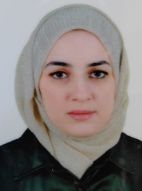
Rasha Bashar Mohammed
Research InterestsAdaptive antenna and antenna design
| Gender | FEMALE |
|---|---|
| Place of Work | Technical Engineering College for Computer and AI / Mosul |
| Department | Department of Computer Engineering Techniques |
| Position | Teaching Staff Member |
| Qualification | Master |
| Speciality | Communication Engineering |
| rasha.kharoofa@ntu.edu.iq | |
| Phone | 07714219858 |
| Address | Mousl- Iraq, Mousl, Mosul, Iraq |
Skills
Matalb (100%)
MS office (100%)
antenna design (100%)
Academic Qualification
Master of communication Eng.
Oct 1, 2020 - Oct 1, 2022Publications
Simplified Adaptive Interference Suppression Methods Based on Subarray Configurations for 5G Application
Jul 1, 2022Journal International Journal of Microwave and Optical Technology
publisher International Journal of Microwave and Optical Technology
Issue 4
Volume 17
Adaptive antenna arrays is one of the most promising solutions for interference suppression in the crowded spectrum environment of the wireless communication systems such as 5G and behind where they are efficiently capable to steer their main beams and nulls toward desired directions and interfering signals respectively. However, some difficulties can be raised when it comes to practical implementation of these arrays such as a high complexity weighting network due to deployment a large number of the adaptive controllers which result in a low convergence speed. The main goal of this paper is to introduce various new array configurations to simplify the weighting network and at the same time to reduce the convergence speed of the adaptive algorithm while maintaining a satisfactory array performance. The proposed configurations include regular adaptive subarray, partially adaptive array elements, and partially adaptive irregular subarray. These array weightings are performed directly during the adaptation process, which are different from any other existing techniques. Simulation results fully illustrated the advantages and the effectiveness of the proposed array weighting configurations in terms of faster convergence speed, better interference suppression, and simpler weighting networks.
Side Lobe Reduction Using Non-Uniform Linear Phased Arrays
May 1, 2021Journal IOP Conf. Series: Materials Science and Engineering
publisher IOP Conf. Series: Materials Science and Engineering
DOI doi:10.1088/1757-899X/1152/1/012014
Volume 1152
Non-uniform amplitude excitation arrays are nowadays very desirable in the modern wireless communication systems. They have ability to provide required radiation characteristics such as low side lobes and good directivity. The uniform amplitude excitation arrays are good in providing good directivity and narrow beam width. However, these desired radiation features are come at the cost of relatively high side lobes. Thus, these types of arrays are not widely used in the wireless communication systems especially when these arrays are operated in a noisy and crowded environment that contains many interfering signals. Nonuniform amplitude excitations such as Dolph and Taylor are considered in this paper and their performances are investigated under various array parameters. Simulation results show that as the amplitude excitations of the array elements decaying at the edge elements more reduction in the sidelobe patterns can be obtained.






